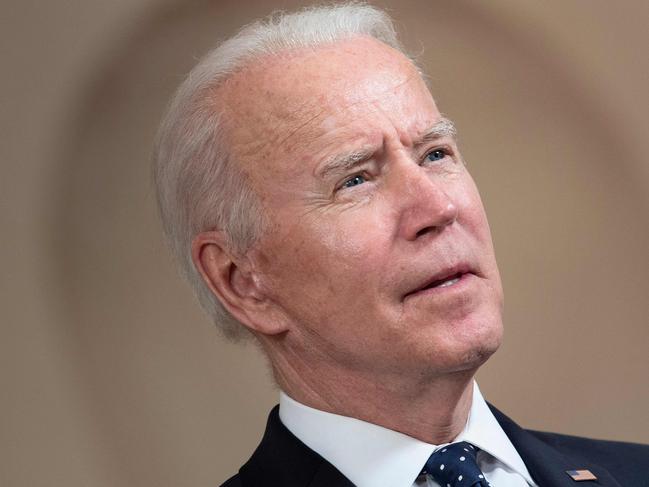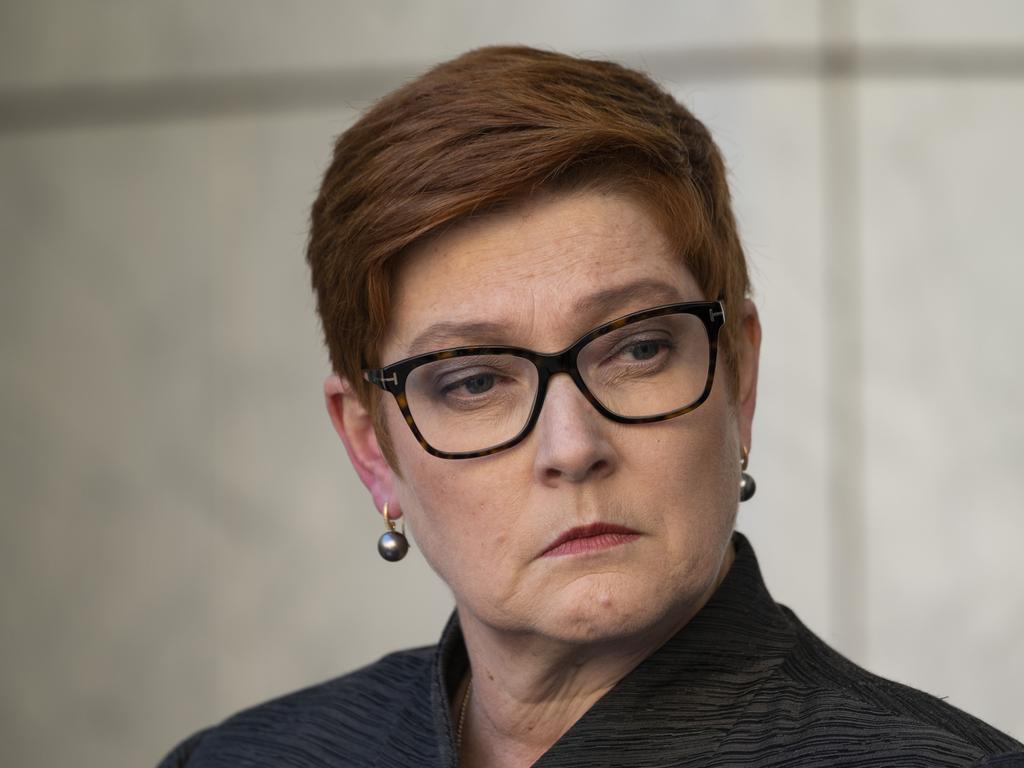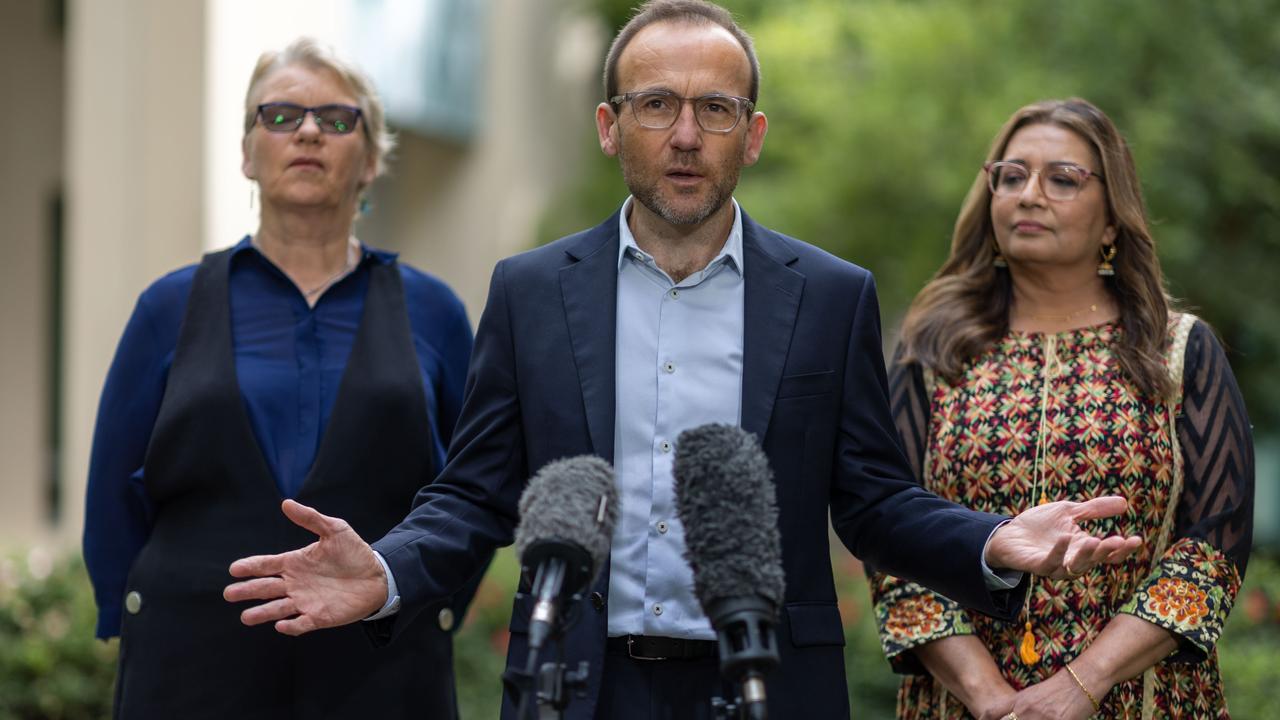Scott Morrison’s $1bn bet on climate tech
Scott Morrison will promote practical action and achievement over ambition at Joe Biden’s climate change summit.

Scott Morrison will promote practical action and achievement over ambition at Joe Biden’s climate change summit and will announce that next month’s budget will pump more than $1bn into advancing low-emissions technologies.
The Prime Minister will commit the government to accelerating international collaboration to grow investment in low-emissions technologies across the globe, with business and investor groups urging him to increase the government’s 2030 Paris target to meet the goal of carbon neutrality by mid-century.
Decisions by the US and Britain to push for more ambitious medium-term emissions reduction targets ahead of Mr Biden’s two-day virtual conference have also increased pressure on Mr Morrison to outline how Australia will “meet and exceed” its target of 26-28 per cent below 2005 levels by the end of the decade.
Ahead of his appearance late Thursday night at the US climate summit along with 40 other world leaders, including Chinese President Xi Jinping, Mr Morrison said Australia would not “look to reduce our own emissions by shutting down our existing export industries like agriculture, aluminium, coal and gas”. Under a new $566m international technology package — adding to the separate $540m boost for hydrogen and carbon capture and storage announced on Wednesday — the government will work to fasttrack the five priority technologies under its Technology Investment Roadmap.

Mr Morrison will commit Australia to strengthening its partnerships with the US, Britain, Japan, Korea, Germany, India, New Zealand, Canada and the European Commission ahead of the UN Climate Change Conference in November.
In addition to developing the hydrogen and CCS industries, the government is seeking to accelerate new and emerging technologies, including batteries and critical minerals, which has been strongly endorsed by Mr Biden, small modular nuclear reactor technologies as well as green steel and soil carbon measurement to reduce emissions from livestock.
Mr Morrison, who has tasked Energy Minister Angus Taylor and former chief scientist Alan Finkel to broker international low-emissions technology deals, said rapid progress and innovation could only be achieved through global partnerships.
“The world is changing and we want to stay ahead of the curve by working with international partners to protect the jobs we have in energy-reliant businesses, and create new jobs in the low emissions technology sector,” Mr Morrison said.
“We’ll work closely with our friends and neighbours to play our part in the global effort to cut emissions through technology while driving economic growth, creating jobs and pushing down energy costs.”
The government is seeking to leverage $3-$5 of co-investment for every dollar invested through “practical, project-based” partnerships to accelerate energy technologies, drive down costs and create up to 2500 jobs.
Investors and business groups on Wednesday seized on UK Prime Minister Boris Johnson’s ambitious new target — of cutting emissions by 78 per cent of 1990 levels by 2035 — to call on the Morrison government to increase its 2030 target.
Mr Biden will also unveil a new US emissions reduction target, expected to be a 50 per cent cut by 2030, based on 2005 levels.
In announcing his new target ahead of hosting the COP26 climate summit in Glasgow, Mr Johnson said “we want to continue to raise the bar on tackling climate change” and hoped world leaders matched the UK ambition.
British high commissioner to Australia Vicki Treadell said each country had to decide what that ambition looked like, but stressed it should include midterm targets.

“One of the big issues and conversations I have with Australian ministers and officials is ‘how do you measure this? How do we know that we will hit the point we need to hit by 2050?’ So interim measures, interim targets, policy, the way to make sure that when business and industry announce they’re going to become carbon neutral by 2050, how do we prove that they are?” Ms Treadell told Sky News.
“Legislation is a tool, a regulatory environment is another way to have the right framework.
“We need to be creative but we need measurement, we need plans and most importantly we need certainty for business and industry.”
The Investor Group on Climate Change, representing Australian and New Zealand investors with funds under management of more than $2 trillion, is pushing for a 45-65 per cent 2030 target to achieve Paris objectives.
The group’s policy director, Erwin Jackson, warned companies were looking offshore to invest in clean energy projects that global capital markets had decided were “the future”.
“Because Australia doesn’t have a credible 2030 target (of 26-28 per cent of 2005 levels), it doesn’t have a nationally stable policy,” he said.
“What we’re seeing is investors going to other markets like the US, Europe, Asia, to find the deals that they need to make sure they can deliver returns to their superannuation holders in the long term.
“The cost of projects in Australia is therefore higher, the cost of capital is therefore higher.
“So it’s deterring investment in new industries that could be creating the jobs that we’re going to need as we’re going to transition.”
Mr Taylor said getting new energy technologies to parity would slash global emissions in developed and developing nations and ensure “countries don’t have to choose between growth and decarbonisation”.
“Rapid progress and innovation can be achieved when the world works together towards a common goal,” he said.
Dr Finkel, the government’s special adviser for low emissions technologies, said under current market settings, priority low-emissions technologies were “currently more expensive than the high emissions incumbents”.
“That is, they carry a green premium. The goal of the roadmap is to help industry to scale up to convert the green premium into a green discount, thereby ensuring a future low-cost, low-emissions economy,” Dr Finkel said.
Australian Industry Group head of climate policy Tennant Reed said businesses expected tougher targets in the medium term not just because of international pressure but because that was what was required to get to net zero emissions by 2050.
“The government’s perfectly right to say a number will only mean so much until there’s a plan to deliver it but we’re seeing more and more of that homework get filled in overseas. Eyes are turning to us,” Mr Reed said.







To join the conversation, please log in. Don't have an account? Register
Join the conversation, you are commenting as Logout